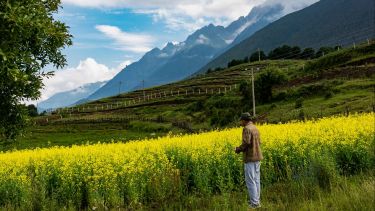The workshop is organised every three years in a different location; the first IPW was carried out in Wexford, Ireland, in 1995. This year the event took place at ETH Zurich, Switzerland, from 8 - 12 of July and had an additional relevance since it is the 350th anniversary of the discovery of phosphorus.
Our fellow Domiziana Cristini (ESR13) is currently working on stable isotopes of phosphate in freshwater ecosystems, hence the IPW9 was a great opportunity to discuss her project. She presented a poster in the session dedicated to theme 5 (Environmental phosphorus problems).
The workshop arose from the awareness that phosphorus (P) is a key element to all organisms and that an inappropriate use of it causes environmental problems. P is largely applied as fertiliser all over the world and its excess in soils results in dissipation into freshwater ecosystems.
The enrichment of P in water bodies is termed eutrophication and has diverse negative consequences like the deterioration of water quality, toxic algal blooms, anoxia (Sondergaard and Jeppesen, 2007). Furthermore, the P surplus that remains in soil may threaten terrestrial biodiversity (Lambers et al., 2013).
The IPW9 was attended by experts from different fields: natural, engineering and social science, to offer a deeper view on all the aspects that concern P. The activities took place in plenary and parallel oral presentations, poster sessions, interactive workshops and excursions. During these activities five themes were investigated:
- Phosphorus scarcity
- Optimising regional and national phosphorus cycles
- Sourcing phosphorus fertilisers
- Efficient phosphorus use in agroecosystems
- Environmental phosphorus problems.
The oral and poster presentations gave an insight on the advancements in P knowledge and technology, as well as on the concepts that drove the P-related research so far. On the other hand, the interactive workshops offered the possibility to discuss future research address and actions to solve P-derived problems.
References
Lambers, H., Ahmedi, I., Berkowitz, O., Dunne, C., Finnegan, P.M., Hardy, G.E.St J., Jost, R., Laliberté, E., Pearse, S.J., Teste, F.P., 2013. Phosphorus nutrition of phosphorus-sensitive Australian native plants: threats to plant communities in a global biodiversity hotspot. Conserv Physiol 1: (1).
Sondergaard M., Jeppesen E., 2007. Anthropogenic impacts on lake and stream ecosystems, and approaches to restoration. J. Appl. Ecol. 44: 1089-1094.

